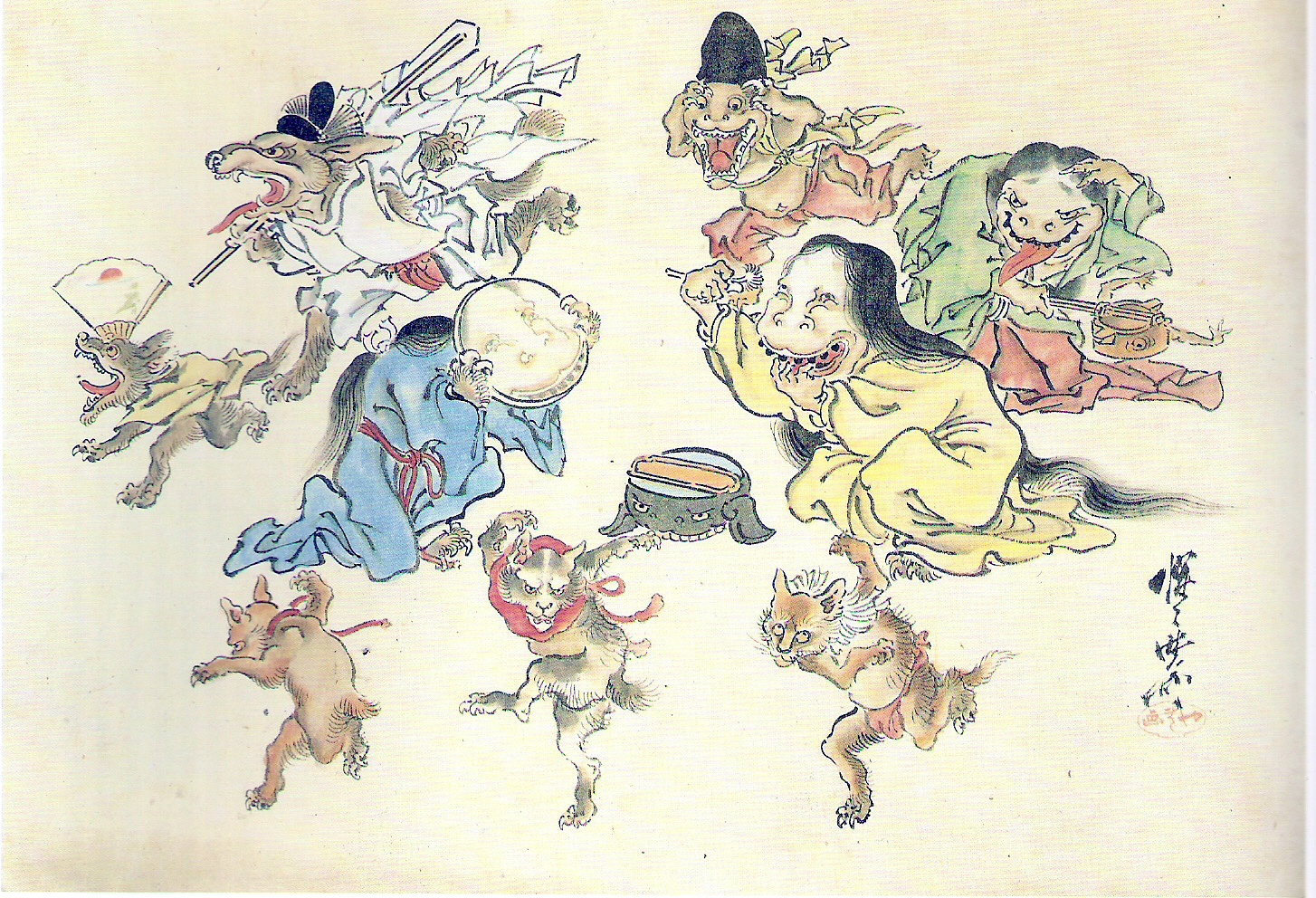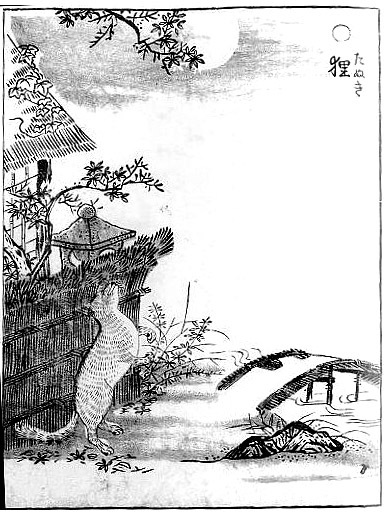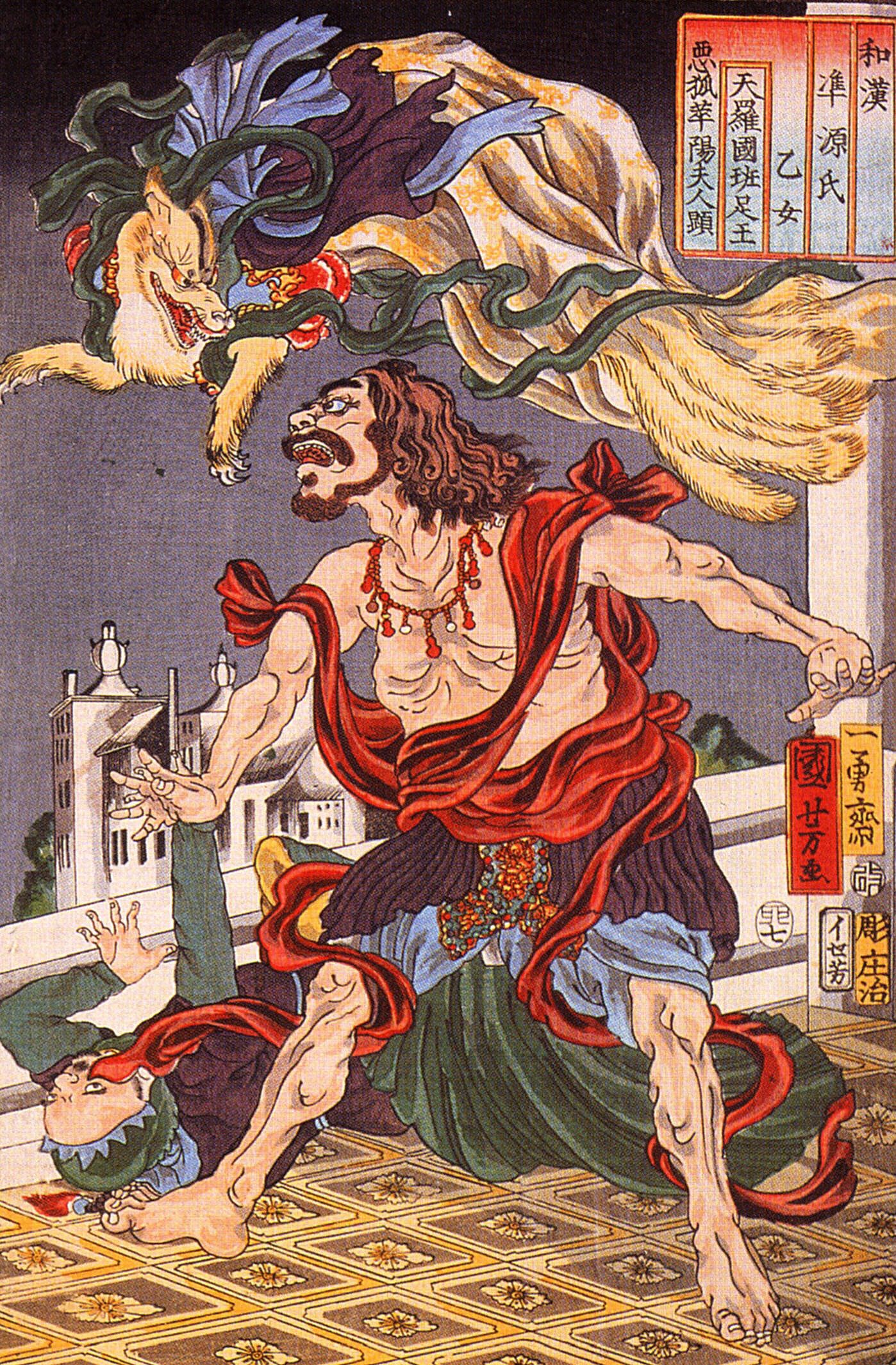|
The Night Parade (novel)
''The Night Parade'' (2016) is a juvenile fiction debut novel by Kathryn Tanquary, a middle-grade author and teacher of English as a foreign language in Gunma Prefecture, Japan. Tanquary’s ''The Night Parade'' is reminiscent of the 2001 Japanese anime fantasy film '' Spirited Away'' by Hayao Miyazaki. It has also been likened to Neil Gaiman’s '' Coraline'' and Grimm's fairy tales. Plot Saki Yamamato, a 13-year-old girl, travels with her parents from their home in Tokyo to visit her widowed grandmother in the Japanese countryside for the annual Obon festival. Used to the convenience of always being connected to her friends by cell phone, Saki is horrified when she loses signal in the rural mountain village where her grandmother lives. In an attempt to fit in with a group of local kids, Saki goes to the mountain’s graveyard shrine to ring the sacred bell, and she is plagued with a death curse that she must break in order to save her family and the human world. A series ... [...More Info...] [...Related Items...] OR: [Wikipedia] [Google] [Baidu] |
Kathryn Tanquary
Kathryn Tanquary is an American juvenile fiction author who lives and works in Japan. She is from Highlands Ranch, Colorado, and currently works as an editor for Edelman (firm), Edelman Japan. Tanquary studied creative writing at Knox College (Illinois), Knox College, where she graduated from in 2010. At Knox College, she was listed as a distinguished student on the Dean's list, Dean's List and the President's Circle. After attaining her degree, Tanquary taught English as a Foreign Language to middle school students in the Gunma Prefecture of Japan. In college, Tanquary wrote several short stories for adults. She has always been interested in Japanese folklore, which stimulated the concept for her debut novel, a juvenile fiction book titled ''The Night Parade'', which won the 2016 Freeman Awards, Freeman Book Award for Young Adult/Middle School Literature. Soon after its January 2016 release, the author stated that she plans to release a new Middle-grade fiction, middle-grade se ... [...More Info...] [...Related Items...] OR: [Wikipedia] [Google] [Baidu] |
Obon
or just is fusion of the ancient Japanese belief in ancestral spirits and a Japanese Buddhist custom to honor the spirits of one's ancestors. This Buddhist–Confucian custom has evolved into a family reunion holiday during which people return to ancestral family places and visit and clean their ancestors' graves when the spirits of ancestors are supposed to revisit the household altars. It has been celebrated in Japan for more than 500 years and traditionally includes a dance, known as . The festival of Obon lasts for three days; however, its starting date varies within different regions of Japan. When the lunar calendar was changed to the Gregorian calendar at the beginning of the Meiji era, the localities in Japan responded differently, which resulted in three different times of Obon. (Bon in July) is based on the solar calendar and is celebrated around the 15th of July in eastern Japan ( Kantō region such as Tokyo, Yokohama and the Tōhoku region), coinciding with . ... [...More Info...] [...Related Items...] OR: [Wikipedia] [Google] [Baidu] |
Literary Agent
A literary agent is an agent who represents writers and their written works to publishers, theatrical producers, film producers, and film studios, and assists in sale and deal negotiation. Literary agents most often represent novelists, screenwriters, and non-fiction writers. Reputable literary agents generally charge a commission and do not charge a fee upfront. The commission rate is generally 15%. Diversity Literary agencies can range in size from a single agent who represents perhaps a dozen authors, to a substantial firm with senior partners, sub-agents, specialists in areas like foreign rights or licensed merchandise tie-ins, and clients numbering in the hundreds. Most agencies, especially smaller ones, specialize to some degree. They may represent—for example—authors of science fiction, mainstream thrillers and mysteries, children's books, romance, or highly topical nonfiction. Very few agents represent short stories or poetry. Legitimate agents and agencies in the b ... [...More Info...] [...Related Items...] OR: [Wikipedia] [Google] [Baidu] |
Publishers Weekly
''Publishers Weekly'' (''PW'') is an American weekly trade news magazine targeted at publishers, librarians, booksellers, and literary agents. Published continuously since 1872, it has carried the tagline, "The International News Magazine of Book Publishing and Bookselling". With 51 issues a year, the emphasis today is on book reviews. The magazine was founded by bibliographer Bibliography (from and ), as a discipline, is traditionally the academic study of books as physical, cultural objects; in this sense, it is also known as bibliology (from ). English author and bibliographer John Carter describes ''bibliography ... Frederick Leypoldt in the late 1860s, and had various titles until Leypoldt settled on the name ''The Publishers' Weekly'' (with an apostrophe) in 1872. The publication was a compilation of information about newly published books, collected from publishers and from other sources by Leypoldt, for an audience of booksellers. By 1876, ''The Publishers' Weekly ... [...More Info...] [...Related Items...] OR: [Wikipedia] [Google] [Baidu] |
Peer Pressure
Peer pressure is the direct or indirect influence on peers, i.e., members of social groups with similar interests, experiences, or social statuses. Members of a peer group are more likely to influence a person's beliefs, values, and behavior. A group or individual may be encouraged and want to follow their peers by changing their attitudes, values or behaviors to conform to those of the influencing group or individual. For the individual affected by peer pressure, this can have both a positive or negative influence on them. Social groups include both ''membership groups'' in which individuals hold "formal" membership (e.g. political parties, trade unions, schools) and cliques in which membership is less clearly defined. However, a person does not need to be a member or be seeking membership of a group to be affected by peer pressure. An individual can be in a crowd, a group of many cliques, and still be affected by peer pressure. Research suggests that organizations as well ... [...More Info...] [...Related Items...] OR: [Wikipedia] [Google] [Baidu] |
Japanese Culture
The culture of Japan has changed greatly over the millennia, from the country's prehistoric Jōmon period, to its contemporary modern culture, which absorbs influences from Asia and other regions of the world. Historical overview The ancestry of Japanese people remains mysterious; however, there are two competing hypotheses that try to explain the lineage of the Japanese people. The first hypothesis proposes a dual-structure model, in which Japanese populations are descendants of the indigenous Jomon people and later arrivals of people from the East Eurasian continent, known as the Yayoi people. Japan's indigenous culture originates primarily from the Yayoi people who settled in Japan between 1000 BCE and 300 CE. Yayoi culture spread to the main island of Honshū, mixing with the native Jōmon culture. Modern Japanese have an estimated 80% Yayoi and 20% Jōmon ancestry. The second hypothesis posits a tripartite model of genomic origin. This hypothesis proposes that co ... [...More Info...] [...Related Items...] OR: [Wikipedia] [Google] [Baidu] |
IndieBound
IndieBound is a marketing movement for independent bookstores launched in 2008 by the American Booksellers Association. With resources targeted for "indie" booksellers, it promotes fiscal localism. IndieBound's curated reading lists include the Indie Next List (indie recommendations from around the country) and the Indie Bestseller List (bestsellers lists based on indie store sales). Launch IndieBound was launched in June 2008 to replace a prior marketing program for independents called Book Sense. Independent bookstores sell online through their own e-commerce sites, many using the ABA IndieCommerce platform. IndieBound.org is store referral site for customers searching for an independent bookstore. Following its launch, the US scheme was expanded to the UK, New Zealand and Australia. However, as of 2015 the Australian version appears to be in abeyance, as despite still having a Twitter account, the linked website is unrelated and the Australian Booksellers Association website ... [...More Info...] [...Related Items...] OR: [Wikipedia] [Google] [Baidu] |
Night Parade Of One Hundred Demons
Night (also described as night time, unconventionally spelled as "nite") is the period of ambient darkness from sunset to sunrise during each 24-hour day, when the Sun is below the horizon. The exact time when night begins and ends depends on the location and varies throughout the year, based on factors such as season and latitude. The word can be used in a different sense as the time between bedtime and morning. In common communication, the word ''night'' is used as a farewell ("good night", sometimes shortened to "night"), mainly when someone is going to sleep or leaving. Astronomical night is the period between astronomical dusk and astronomical dawn when the Sun is between 18 and 90 degrees below the horizon and does not illuminate the sky. As seen from latitudes between about 48.56° and 65.73° north or south of the Equator, complete darkness does not occur around the summer solstice because, although the Sun sets, it is never more than 18° below the horizon at lowe ... [...More Info...] [...Related Items...] OR: [Wikipedia] [Google] [Baidu] |
Hyakki Yagyō
''Hyakki Yagyō'' (, "Night Parade of One Hundred Demons"), also transliterated ''Hyakki Yakō'', is an idiom in Japanese folklore. Sometimes an orderly procession, other times a riot, it refers to a parade of thousands of supernatural creatures known as ''oni'' and ''yōkai'' that march through the streets of Japan at night. As a terrifying eruption of the supernatural into the real world, it is similar (though not precisely equivalent) to the concept of pandemonium in English. Various legends Over more than one thousand years of history, and its role as a popular theme in traditional storytelling and art, a great deal of folklore has developed around the concept, making it difficult if not impossible to isolate any canonical meanings. One legend of recent vintage states that "every year the ''yōkai'' Nurarihyon, will lead all of the ''yōkai'' through the streets of Japan during summer nights." Anyone who comes across the procession would perish or be spirited away by the ' ... [...More Info...] [...Related Items...] OR: [Wikipedia] [Google] [Baidu] |
Bake-danuki
''Bake-danuki'' () are a kind of ''yōkai'' (supernatural beings) found in the classics and in the folklore and legends of various places in Japan, commonly associated with the Japanese raccoon dog or ''tanuki''. Although the ''tanuki'' is a real, extant animal, the ''bake-danuki'' that appears in literature has always been depicted as a strange, even supernatural animal. The earliest appearance of the ''bake-danuki'' in literature, in the chapter about Empress Suiko in the '' Nihon Shoki'' written during the Nara period, there are such passages as "in two months of spring, there are tanuki in the country of Mutsu (), they turn into humans and sing songs ()." Bake-danuki subsequently appear in such classics as the Nihon Ryōiki and the Uji Shūi Monogatari. In some regions of Japan, ''bake-danuki'' are reputed to have abilities similar to those attributed to ''kitsune'' (foxes): they can shapeshift into other things or people, and can possess human beings. Many legends of ''tanuk ... [...More Info...] [...Related Items...] OR: [Wikipedia] [Google] [Baidu] |
Tengu
are a type of legendary creature found in Japanese folk religion (Shinto). They are considered a type of ''yōkai'' (supernatural beings) or Shinto ''kami'' (gods). The ''Tengu'' were originally thought to take the forms of birds of prey and a monkey deity, and they are traditionally depicted with human, monkey, and avian characteristics. Sarutahiko Ōkami is considered to be the original model of Konoha-Tengu (a supernatural creature with a red face and long nose), which today is widely considered the ''Tengu''s defining characteristic in the popular imagination. He is the Shinto monkey deity who is said to shed light on heaven and earth. Some experts theorize that Sarutahiko was a sun god worshiped in the Ise region prior to the popularization of Amaterasu. Buddhism long held that the ''Tengu'' were disruptive demons and harbingers of war. Their image gradually softened, however, into one of protective and even manifestations of Buddhist deities, if still dangerous, spirits ... [...More Info...] [...Related Items...] OR: [Wikipedia] [Google] [Baidu] |
Kitsune
In Japanese folklore, , are foxes that possess paranormal abilities that increase as they get older and wiser. According to ''yōkai'' folklore, all foxes have the ability to shapeshift into human form. While some folktales speak of employing this ability to trick others—as foxes in folklore often do—other stories portray them as faithful guardians, friends, and lovers. Foxes and humans lived close together in ancient Japan; this companionship gave rise to legends about the creatures. have become closely associated with Inari, a Shinto or spirit, and serve as its messengers. This role has reinforced the fox's supernatural significance. The more tails a has—they may have as many as nine—the older, wiser, and more powerful it is. Because of their potential power and influence, some people make sacrifices to them as to a deity. Conversely foxes were often seen as " witch animals", especially during the Edo period (1603–1867), and were thought of as goblins who could ... [...More Info...] [...Related Items...] OR: [Wikipedia] [Google] [Baidu] |





